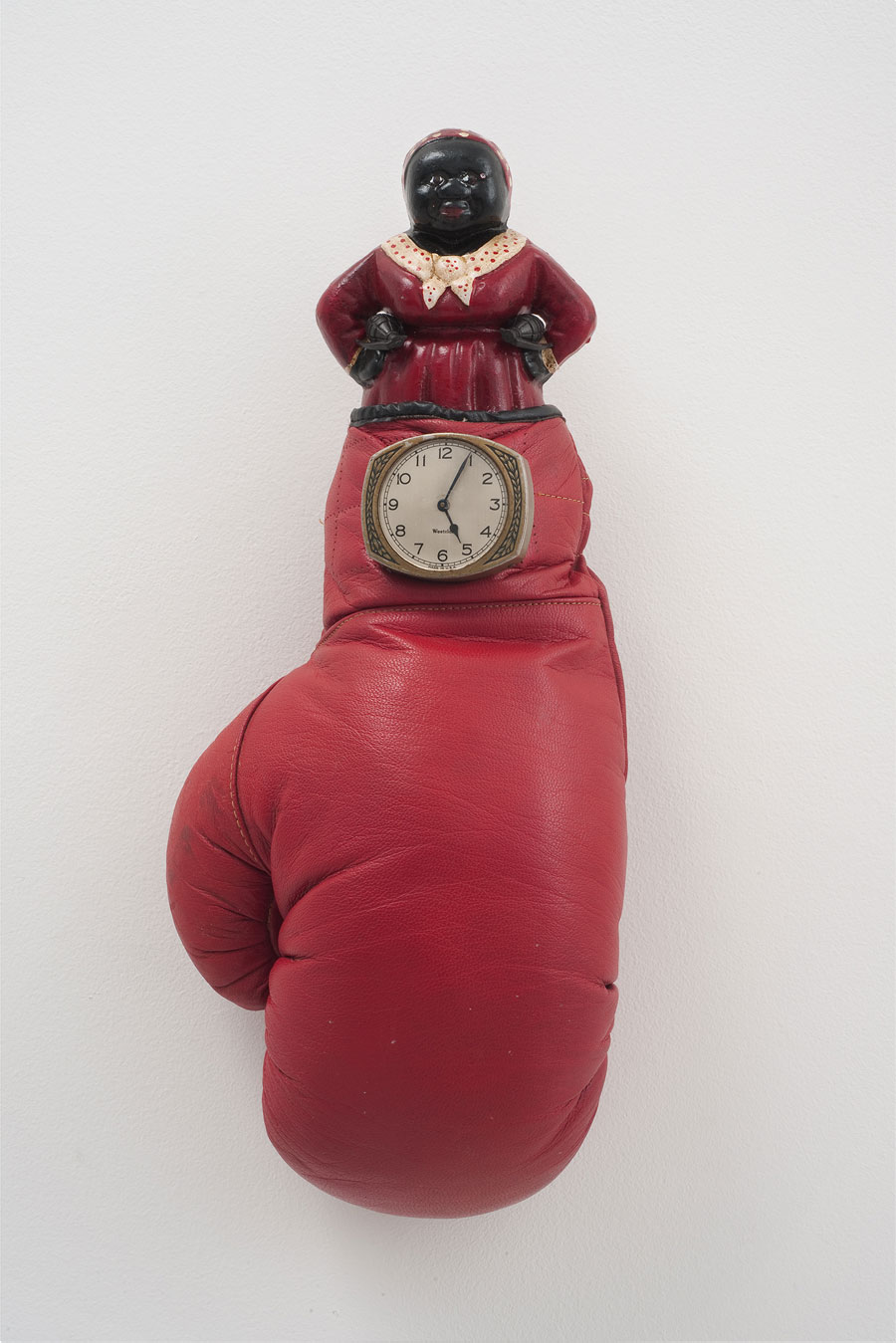Betye Saar
Fondazione Prada, Milan, Italy
Fondazione Prada, Milan, Italy

‘My work moves in a […] spiral,’ says Betye Saar in the opening statement at the entrance of ‘Betye Saar: Uneasy Dancer’. The spiral seems an apt image for the career of this seminal artist. For more than 50 years, Saar has returned to the same themes – identity, memory, gender, faith: the vanishing points at which the personal and political blur into one another – with a remarkably consistent visual style. Semantically complex and vibrating with strong currents of anger and love, her work adopts the formal frailty of children’s assemblages.
The exhibition is arranged around this spiral-based reading of Saar’s oeuvre: three interlinked, temporary halls are each devoted to a particular kind of work. The first room gathers Saar’s explicitly political pieces: assemblages that deal with institutional racism and African-American liberation. A Call To Arms (1997) shows the figure of a black woman, made from a brush and two shotgun shells, standing exultantly between two raised fists; Sock It to ’Em (2011) includes Saar’s rendition of the iconic Aunt Jemima figurine emerging from a boxing glove. (Now deemed racist, this African-American servant woman was once the face of a range of American breakfast-food brands.) Other works similarly mix references to racially charged stereotypes with weapons, birdcages and building plans for a slave ship. The playful look of these small sculptures contrasts sharply with the injustice and horror they evoke.

The transition to the second hall pivots on Migration: Africa to America I (2006), which is lodged in a niche in a partition wall. Seen from the first room, the work shows a 19th-century studio portrait of a young African-American girl in a Sunday dress. Moving into the second room, however, reveals the piece’s other side: the statuette of a woman in a clichéd tribal costume (naked torso, straw skirt), with a tiny Aunt Jemima sitting on her head (The High Priestess, 1993). Depicted in the background are a full moon, a star and a crescent – alongside recurring elements that deal with spirituality, faith and cultural belonging. The resulting mix is joyfully syncretic: a window whose different panes together depict the sign of Leo; a collage of ancient Egyptian ritual drawings; a heart-shaped doll adorned with lucky charms lying underneath a sky spangled with crescents, crosses and swords. This commingling of religious and historical contexts evokes a notion of faith centred not on how religion defines individual identity, but on how spirituality creates community and belonging.
The third room gathers Saar’s more intimate work: ‘memory boxes’ – made using photos, found objects, fabric and cut-up images – that are evocative of a particular mood or state of mind, and sometimes refer specifically to an individual whose portrait and personal items are included. The intimacy of these boxes, however, does not mark these works as ‘private’: on the contrary, they are an expression of the political significance that black feminism sees in the simple practices of everyday life. This is a key trait in Saar’s oeuvre: her ability
to use the personal and the intimate to portray and question the collective.

Saar’s exhibition, her first in Italy, takes place a few months after Five Car Stud (1969–72), Ed Kienholz’s haunting, life-size tableau depicting an act of racist violence, was on view at Fondazione Prada. The two exhibitions offer diametrically opposite ways of tackling the same issues – with brutally unflinching realism or a semantically layered, ironic stance: aiming either to agitate or to unite. In a country such as Italy, currently undergoing a horrifying racist backlash in the wake of the surge in migrant arrivals, both voices are sorely needed – yet Saar’s approach cannot but appear as the more timely and productive.





















